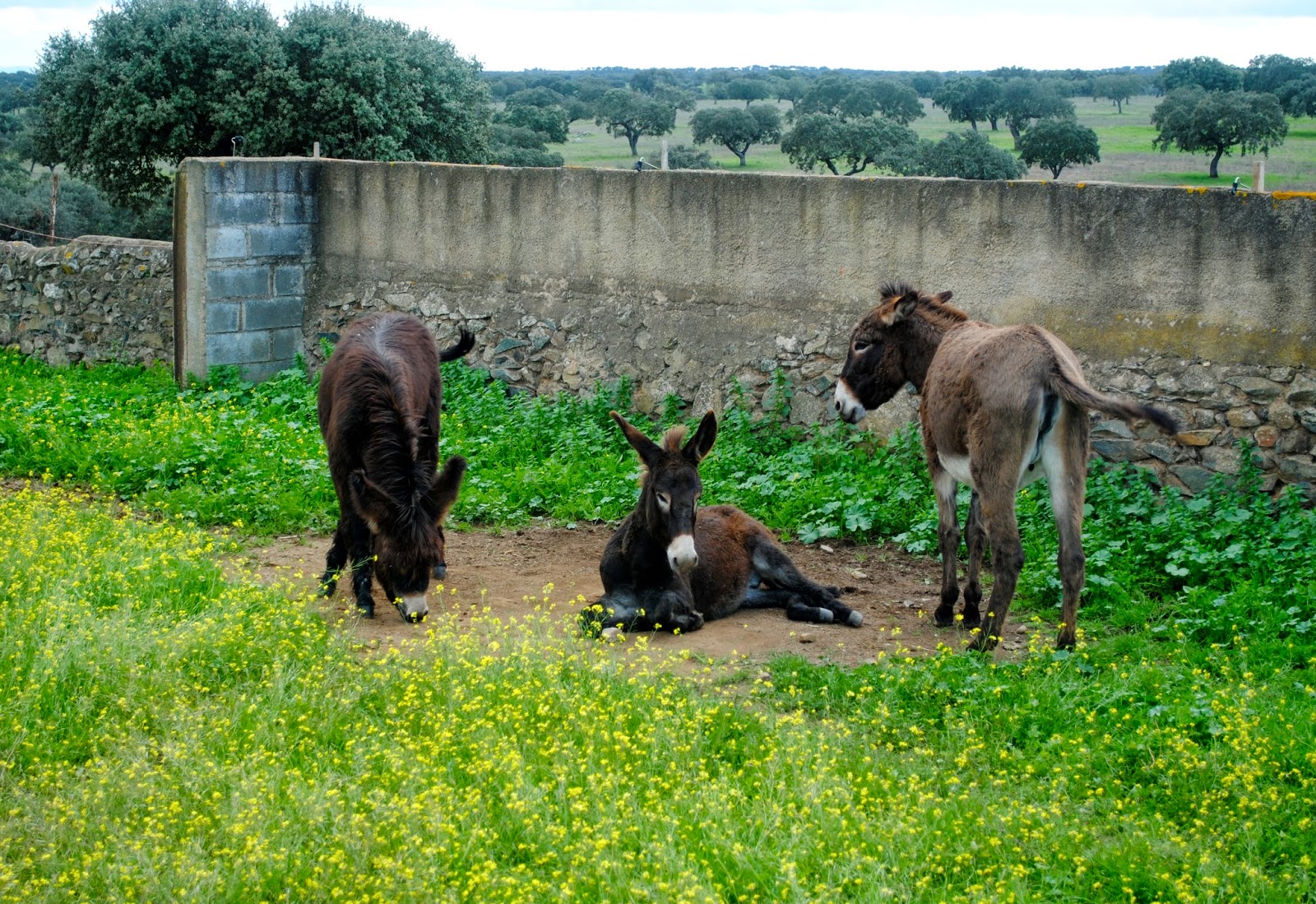J.
G. I found lots of stories about pomegranate names. And not every story is
pretty. For instance, the ‘Glavaš’ cultivar (above, on the left of wild
pomegranates) is assumed to have been brought to Croatia by Turkish
warriors who were cutting heads off during the Ottoman times. Since ‘Glavaš’
pomegranate trees carry very large fruits (from 500 g to more than 1 kg), they
remind of “heads” – the meaning of “glava” in Croatian.
Another one is
‘Konjski zub’ (below). “konj” means “horse” and “zub” means “tooth”. It seems
to originate from the Italian cultivar ‘Dente di cavallo’, the arils having the
shape of a horse tooth. As to the cultivar ‘Dividiš’ originates from Turkey and
its name means “camel tooth”. Again, “tooth” refers to the shape of the aril,
not to the one of the seed (compare with the Glavaš arils at the bottom of this post).
Still another one
is called ‘Ciparski’ because it came from Cyprus a long time ago. Since no one
knew the name of the cultivar, they simply referred to its geographical origin.
There are plenty of interesting stories of this type….
A.G. Can you describe us the features of some of the most interesting
cultivars?
J.G. As
I said, ‘Glavaš’ is definitely very interesting because of its very large fruits.
Another one is ‘Barski slatki’. It is very sweet and is named after the city of Bar in Montenegro. It is easily
recognizable by the ridges on its bark. Montenegrans won’t buy it if there are
no ridges on the bark!
There is another very sweet cultivar: ‘Medun’ – from “med” which means “honey”
in Croatian. As to ‘Šerbetas’, you can find it near Mostar in Herzegovina. It
is very sweet and has deep red arils. The results of chemical analysis have
shown that it has the highest amount of ascorbic acid of all our cultivars (38 mg per 100
ml !). As to ‘Dividiš’ (below), it is my favorite. It has very large
fruits, juicy arils with a sweet-sour taste. Axel, I think that you tried it
recently and liked it very much too, don’t you ?
A.G. You’re absolutely right!
Delicious! By the way, you travelled to other countries to see pomegranate
orchards too, didn’t you? Can you tell us about some memories from these trips?
J.G. Well, I didn’t travel as much I
would have liked to. Since there is no intense pomegranate production in
Croatia, I was very interested to see how it is somewhere else. I got a chance
to go to China last year, in the Shandong province, and I was very surprised to
see each pomegranate fruit packed in a bag on the tree. You can easily imagine
how many hours of labour it takes to protect every single fruit in this way
from birds, mice, rain, aphids, sunburns, etc. I was amazed! I tasted a
cultivar of similar appearance as ‘Glavaš’ but with soft seeds. All Croatian
cultivars have hard seeds. So, soft seeds were new to me.
A.G. Do you see a potential for new uses
of pomegranates?
J.G. Pomegranates are traditionally used in Croatia as fresh fruits (especially Glavaš, Sladun and Barski slatki) or for juice (the same cultivars plus the small and sour wild pomegranate). For syrup, some people mix these cultivars while others only use wild pomegranate. Luckily, there is growing interest in some other uses. There is great potential here. Flowers can be collected and dried for tea, as is common in Turkey. There is no incompatibility between picking flowers and collecting fruits because it is easy to spot which flowers will end up as fruits and which ones will be rejected. It has an amazing and rich flavour. Vinegar can also be made out of the juice. In other countries (especially the Middle East), pomegranates are used in cooking. I think that Croatians should do it too. And I'm experimenting pomegranate liqueur as well Anardana, a very tasty Indian spice made of dried arils.
A.G. What is the current direction of
your research insofar as pomegranate are concerned?
J.G. The truth is that funds are missing
for me to continue. But I am trying to share my knowledge with growers and with
people who are passionate about pomegranates. My passion for pomegranates will
not vanish…


























